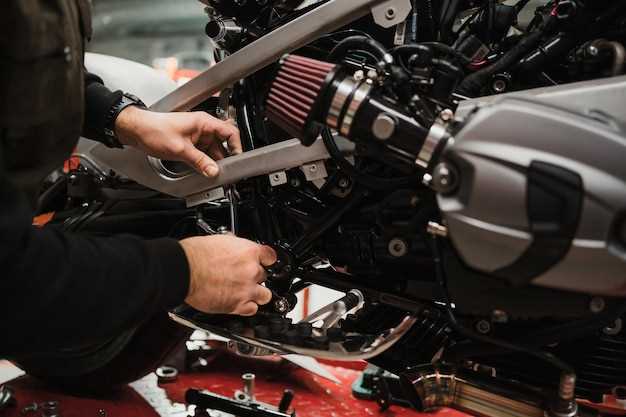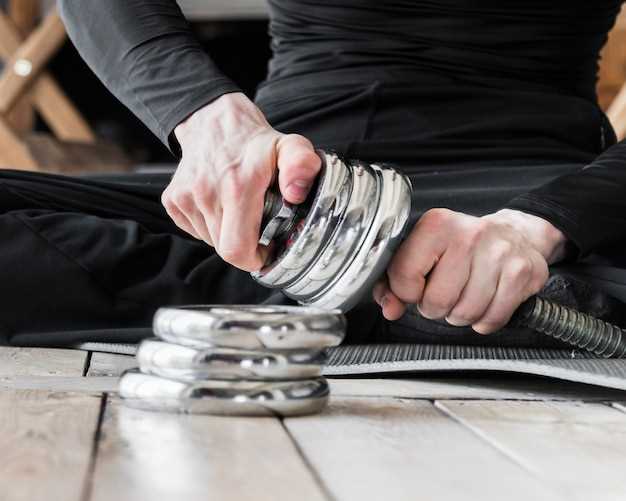
Upgrading your car’s performance is a quest that every car enthusiast embarks on, and one of the most impactful modifications you can make is installing a performance intake system. This system plays a crucial role in your vehicle’s engine by maximizing airflow, thus enhancing horsepower and torque. Whether you’re a seasoned mechanic or a beginner, understanding the intricacies involved in the installation process is vital for achieving the best results.
When you think about muscle cars, the significance of a well-designed intake system cannot be overstated. It acts as the gateway for air to enter the engine, allowing it to breathe better and perform optimally under various driving conditions. A performance intake system not only improves acceleration but also contributes to a more aggressive engine sound that many drivers find appealing.
This guide will walk you through the essential steps for installing a performance intake system in your car. We will cover the tools required, safety precautions, and detailed procedures, ensuring that you can successfully enhance your vehicle’s muscle without any hitches. Get ready to unleash the full potential of your engine and experience the thrill of improved performance.
Choosing the Right Intake System for Your Muscle Car
Selecting the appropriate intake system for your muscle car is crucial for optimizing performance. The right system enhances airflow, boosts engine efficiency, and improves throttle response. First, consider the type of driving you do–street, track, or off-road. Different intake systems cater to varied requirements.
There are primarily three types of intake systems: cold air intakes, short ram intakes, and aftermarket performance intakes. Cold air intakes draw cooler air from outside the engine bay, which results in denser air entering the combustion chamber. This choice is especially beneficial for those seeking maximum horsepower gains. Short ram intakes, on the other hand, provide easier installation and better performance at lower RPMs but may draw warmer air, slightly limiting power at higher speeds.
For muscle cars, ensure your intake system complements other performance modifications you may have made, such as exhaust upgrades or ECU tuning. Compatibility is vital; some systems may require additional modifications or come with specific mounting kits designed for certain engine configurations.
Material quality also plays a significant role in your selection. Aluminum and high-grade plastics are common choices. Aluminum is durable and often used for performance-focused systems, while plastic can reduce heat transfer but may not withstand extreme engine conditions as well.
Finally, consider your budget while factoring in potential gains. Many reputable brands offer performance intakes at various price points, so research reviews and feedback from other muscle car enthusiasts to find an option that meets both your performance goals and financial constraints.
Step-by-Step Preparation Before Installation
Installing a performance intake system in your car can significantly enhance its efficiency and power. However, proper preparation is crucial to ensure a smooth installation process. Follow these steps to get ready before you proceed.
1. Gather Necessary Tools and Materials
Before starting, collect all the required tools such as screwdrivers, wrenches, and pliers. Also, ensure you have the new intake system components, including the intake manifold, filter, and any required gaskets or hardware.
2. Read the Installation Manual
Familiarize yourself with the provided installation guide for the intake system. Each system may have specific requirements or steps you need to follow. Understanding the manual helps you anticipate challenges during the installation.
3. Prepare Your Work Area
Choose a clean and well-lit location to work on your car. Make sure you have enough space to move around freely. Lay out a blanket or tarp to protect your car’s interior and components from any debris or tools.
4. Disconnect the Battery
Safety is a priority. Disconnect the negative terminal of the car battery to prevent any electrical issues while installing the intake system. This precaution helps protect both you and the vehicle’s electrical components.
5. Remove the Old Intake System
Start by carefully detaching the existing intake system. Take your time and remember how each part is connected. Keep all screws and components in one place to avoid misplacement. Documenting the process with photos can help during the reassembly.
6. Inspect Engine Components
Check the surrounding engine parts for wear or damage while the old intake system is removed. Look for any leaks, cracks, or loose connections. Addressing these issues before installing the new intake system ensures optimal performance and longevity.
7. Clean the Installation Area
Thoroughly clean the intake area where the new system will be installed. Remove old gaskets or sealants. A clean surface is crucial for achieving a proper seal during the installation of the new intake system.
By following these steps, you will be well-prepared to install your performance intake system effectively. Proper preparation not only enhances the installation experience but also maximizes the benefits of your new intake system.
Essential Tools Needed for the Installation Process
Installing a performance intake system in your car requires specific tools to ensure that the process is efficient and effective. Below is a list of essential tools that you will need to successfully complete the installation.
1. Basic Hand Tools: A set of standard hand tools, including screwdrivers (both flathead and Phillips), wrenches, and sockets, is crucial. These tools will help you remove existing intake components and secure the new system in place properly.
2. Torque Wrench: A torque wrench is essential for tightening bolts to the manufacturer’s specifications. This tool ensures that connections are secure without being over-tightened, which could damage components.
3. Pliers: Pliers are helpful for gripping, twisting, and cutting as needed during the installation process. They are particularly useful when working with clamps that may be difficult to handle with just your hands.
4. Hose Clamps: Having a selection of hose clamps on hand is important for securing the intake system hoses. These clamps ensure airtight seals, which are crucial for optimal performance.
5. Vacuum Gauge: A vacuum gauge can assist in diagnosing any potential issues with the intake system once installed. It can help ensure that your system is working correctly and efficiently.
6. Clean Rags: Keeping clean rags available is essential for wiping down surfaces and ensuring no debris enters the intake system during installation. Clean surfaces help maintain engine performance.
7. Safety Gear: Always wear safety glasses and gloves to protect yourself from debris and sharp components when working on your car. This equipment helps prevent injury and ensures a safe working environment.
Having these tools ready will streamline the performance intake system installation process, minimizing the risk of complications and ensuring a successful upgrade to your vehicle’s performance. Always refer to the specific installation instructions provided with your intake system for any additional tools that may be required.
Detailed Installation Procedure for Intake System

Installing a performance intake system is a crucial upgrade for any muscle car enthusiast seeking to enhance engine efficiency and power. Follow this detailed procedure to ensure a successful installation.
Before beginning, gather the necessary tools and materials:
- Socket set
- Screwdriver set
- Torque wrench
- New intake system kit
- Silicone sealant (if required)
- Shop towels
Proceed with the installation process by following these steps:
| Step | Action |
|---|---|
| 1 | Disconnect the negative battery terminal to prevent electrical shorts. |
| 2 | Remove the engine cover if applicable, exposing the factory intake system. |
| 3 | Detach the air intake duct by loosening the clamps and removing any fasteners. |
| 4 | Unplug the mass airflow (MAF) sensor and any other sensors attached to the intake system. |
| 5 | Unscrew and remove the factory intake manifold, taking care not to lose any bolts. |
| 6 | Clean the mounting surface to ensure a proper seal for the new intake system. |
| 7 | Install the performance intake manifold, using new gaskets and following manufacturer instructions for torque specifications. |
| 8 | Reconnect the MAF sensor and any other sensors, ensuring electrical connections are secure. |
| 9 | Attach the new air intake duct and tighten any clamps or fasteners. |
| 10 | Reinstall the engine cover if it was removed and reconnect the negative battery terminal. |
| 11 | Start the engine and check for leaks or irregular sounds, ensuring the system is operating smoothly. |
After completing the installation, take your muscle car for a test drive to experience the improvements in throttle response and power. Regularly check for any signs of wear or issues with the intake system to ensure optimal performance.
Common Mistakes to Avoid During Installation

When installing a performance intake system in your car, avoiding common mistakes is crucial for ensuring optimal performance and longevity of the system. Below are key pitfalls to watch out for:
1. Neglecting the Instructions: One of the most frequent errors is not following the manufacturer’s instructions. Every intake system is designed with specific guidelines for installation. Skipping steps or ignoring these details can lead to improper fitting and performance issues.
2. Improper Sealing: Ensuring that all connections and seals are tight is vital. If air leaks occur, it can disrupt the airflow and reduce the efficiency of the intake system. Double-check all grommets, clamps, and seals before finishing the installation.
3. Using Incorrect Tools: Utilizing the wrong tools can cause damage to the components and lead to improper installation. Ensure you have the appropriate tools specified in the installation guide to avoid stripping screws or damaging parts.
4. Ignoring Airflow Direction: It’s important to pay attention to the direction of airflow when installing the intake. Installing the system backwards can severely affect engine performance and may cause the system to malfunction.
5. Over-tightening Clamps: While it’s essential that clamps are secure, over-tightening them can lead to cracks in the intake piping or damage to the air filter. Follow the recommended torque specifications to prevent these issues.
6. Forgetting to Check for Obstructions: Before finalizing the installation, make sure there are no obstructions blocking the air intake. This includes checking the surrounding area for any components or debris that could impede airflow.
7. Not Replacing Filters: If your new intake system comes with a new air filter, ensure the old one is replaced. A dirty or old filter can hinder performance and negate the benefits of the new system.
By avoiding these common mistakes, you can ensure a smooth installation process and maximize the performance benefits of your new intake system.
Tuning Your Muscle Car After Intake Installation
Once you have successfully installed the new intake system on your muscle car, it’s time to optimize its performance. Proper tuning is essential to maximize the benefits of the upgraded intake system and ensure that your car runs efficiently. Here are the key steps to take:
-
ECU Calibration:
Adjusting your car’s Engine Control Unit (ECU) is crucial after installing a new intake. The intake system alters the air-fuel mixture, so recalibrating the ECU allows the engine to respond optimally.
-
Air-Fuel Ratio Adjustment:
Ensure that the air-fuel ratio is balanced for maximum power. Use a wideband O2 sensor to monitor the mixture and adjust accordingly.
-
Dyno Testing:
Consider getting a dyno test to measure your muscle car’s horsepower and torque before and after tuning. This can help identify any changes needed for optimal performance.
-
Throttle Response:
Improving throttle response can greatly enhance driving experience. Adjust throttle body settings or replace components if necessary to achieve better responsiveness.
-
Performance Chip Installation:
Installing a performance chip can adjust the parameters of your muscle car’s engine, providing more aggressive tuning suited for your new intake system.
After completing these tuning steps, don’t forget to regularly monitor your car’s performance. Routine checks and adjustments will help maintain the efficiency of the intake system and the overall performance of your muscle car.




